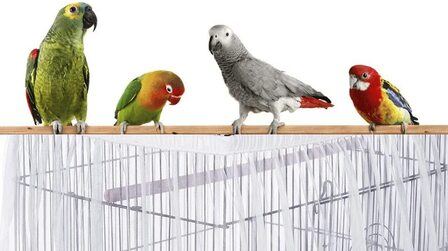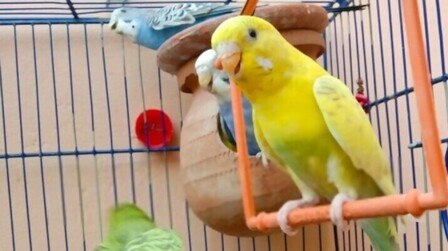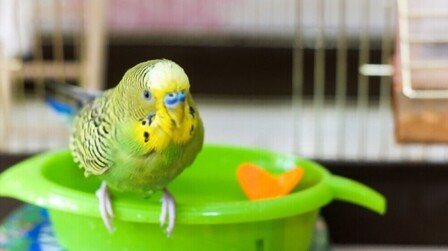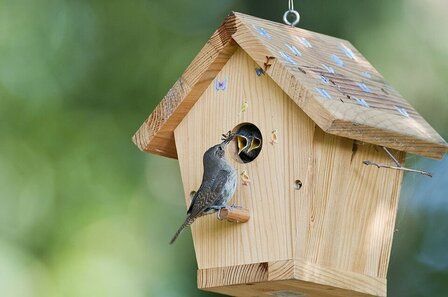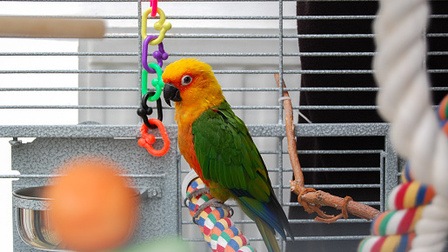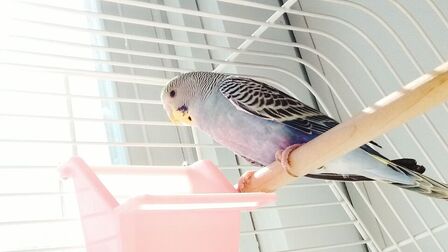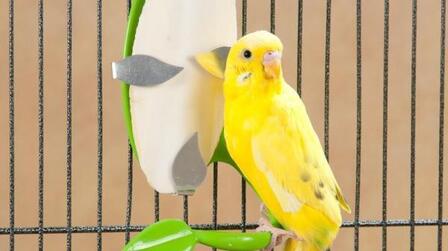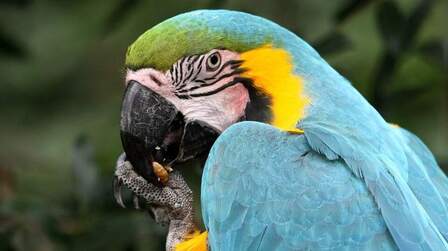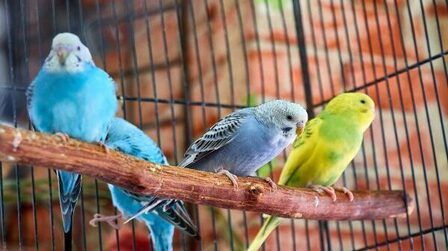The cuttlebone is known to be the calcareous inner shell of the cuttlefish. Cuttlebone have eight arms and two tentacles and are easily found in oceans around the world.
Their main structure is calcium carbonate (85%). The second largest component in squid bones is organic material (8.9%) and mainly carbohydrate material. Here are some benefits of cuttlebone for birds?
1. Why is the cuttlebone needed for birds?

As you know, calcium helps build strong bones, but it's important to know that applies to birds. Cuttlebone are an important addition to the bird's diet as they are an excellent source of essential minerals and calcium, which help the bird form bones and clot blood.
Furthermore, cuttlebone is an inexpensive source of calcium carbonate and other trace minerals for birds. In particular, it does not contain toxins or contaminants. On the other hand, most of the man-made mineral blocks are created from Plaster of Paris. These are man-made mineral blocks containing whatever the manufacturer added; yes food coloring or seeds.
Like calcium, trace elements are important for both humans and birds. Trace elements are found in squid bones, which are beneficial to birds.
The element Iron supports the formation and function of red blood cells, and Potassium maintains the normal functioning of the heart and muscles.
Elemental Zinc supports the immune system
The element copper supports proper circulation and healing.
Besides being an important dietary supplement, squid bone has a rough texture, making it an ideal tool to help support beak strength. Birds use cuttlefish to help keep their beaks trimmed and sharp.
2. Benefits of cuttlebone for birds
Increase calcium for your parrot
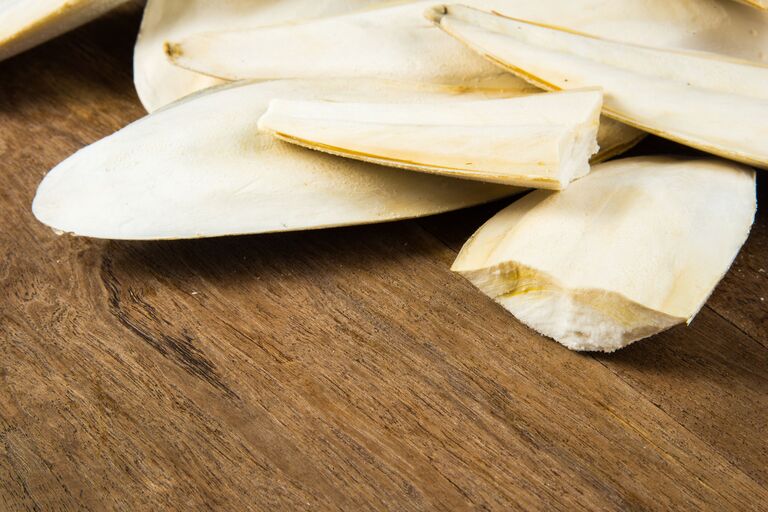
The bird's diet is often lacking in calcium. Feeding squid bones to parrots can help increase the amount of calcium absorbed into the body, helping to strengthen and regenerate bones.
The calcium content in cuttlefish is highly absorbable, making it a supplement to support your bird's bone health.
Some consequences of calcium deficiency in parrots
Calcium is a mineral found in the body of birds and plays an important role in a multitude of physiological functions such as blood clotting, enzymatic processes, nerve conduction and hormone production, many more.
You know, calcium is not easily absorbed by birds because it is often eliminated quickly with the bird's food.
Some calcium-rich foods like kale and spinach can be safely fed to parrots, the oxalate content binds to free calcium and turns into an insoluble compound that the bird's digestive system cannot handle.
For the calcium content in cuttlefish is more easily absorbed, it is a quick and effective way to maintain your bird's calcium needs.
In addition, cuttlebone is cheaper than other calcium-rich foods. However, birds also need a good amount of vitamin D to aid in calcium absorption. So make sure your parrot has "sunbathing time" even if it's only for a few minutes a day.
If you overdose on calcium in parrots, cause as much damage as low calcium levels.
Promotes optimal mine health

In addition to providing a rich source of calcium and essential nutrients, it can also help trim and polish parrot beaks.
However, an overgrown beak can make it difficult for your pet to eat and it can lead to malnutrition, so it's important to brush your parrot's beak regularly.
But petting the cuttlebone can prevent the beak from growing. It only acts as a grinding stone to trim the bird's beak.
Enhance fertility

During the egg laying phase as it helps to form healthier eggs. Eggshells are made of pure calcium carbonate, so there must be a high amount of calcium in the bird's diet during this period.
Provides hours for entertainment
Besides health care, it also serves as a great tool for leisure and exercise.
Due to its unique texture and attractive appearance, the noisy furry friend is sure to enjoy hours of happy sipping.
Things you know before preparing cuttlebone for bird
Usually cuttlebones are available at any pet store, some sold in the pet store are pre-sterilized and ready to use, but if you live near the ocean you can prepare your own.
To process, just boil the fresh bones for about 10 minutes to remove the strong fishy smell, then dry them in the sun to achieve optimal crispness.
In particular, you must disinfect the squid bones before giving them to your bird as it eliminates any viruses, bacteria and pathogens.
3. How to preserve cuttlebone for birds?

Usually plantains are hydrophilic, which means they absorb moisture from the air. As a result, it is susceptible to mold and bacterial overgrowth, so it is important to store them in an airtight container.
4. How to give the cuttlebone for birds?
Furthermore, you just need to make sure that the soft side of the bone is facing up or towards the pet as the crunchy side can be difficult to chew.
5. Alternatives to cuttlebone for bird

Some birds like to gnaw on squid bones, some birds don't like it too much because it's crispy. If the bird refuses to eat the squid bones, you can try another way to feed it.
Step 1: Scrape the soft part of the bone, crush it and mix it with food.
Step 2: Limestone, oyster shells, calcium blocks, and even ground eggshells are great substitutes for cuttlefish.
Note that be sure to thoroughly wash the eggshells before feeding them to avoid contamination.
6. How long does cuttlebone last?

Overall, cuttlebone does not expire or deteriorate. It's just dirty or chewed down on the piece that needs to be attached to the parrot's cage, which you should replace.
If not cleaned, this small piece can be swallowed whole. Parrots are adept at swallowing whole objects because they cannot chew by nature, but can be dangerous with a sharp object.
It usually takes the average parrot a few weeks to finish chewing the squid bones. If the squid bone is large enough for a smaller bird, this can keep the parrot entertained for months.
Size of cuttlebone for birds
Cuttlefish for small parrots:
It will work well with small cuttlefish in the cage. The large cuttlefish can be intimidating to the small parrot, that is it will most likely ignore them in favor of the other toys offered.
Some small parrot breeds include:
- lovebirds
- Cockatiels
- Conures
- Parakeets
Cuttlefish for large parrots:
Some wild seabirds have been observed to peck at large cuttlefish more frequently. This is attributed to the greater crust thickness and higher percentage of calcium aragonite.
This includes species such as:
- Amazon Parrot
- Quaker parrots
- Cockatoos
- Macaws
If the large parrot ignores the squid bone, try moving to a different angle to lure the parrot to chew on the shell. Some parrots may be intimidated by the size and avoid the cuttlebone for a while. Therefore, you can swap out the larger shell for the smaller one to check if the parrot likes the squid bones.
Furthermore, there are flavored squid bones that the parrot can also appreciate. These offer the benefit of additional minerals being mixed into the flavored dough.
Conclusion
As you know, the cuttlebone provides a convenient and natural source of calcium and minerals important for your bird's daily diet. Not only did it provide many health benefits for the pet, and at a stable price at the time.
We recommend cuttlebone because it's natural, safe and effective.


